

Perkin's Mining Bee (Andrena rosae) is a Red Data Book Bee with a very restricted distribution. In Europe and the UK the species is considered to be declining. Malcolm Spooner in his 1984 his Cornish Aculeate review notes that the bee has become scarcer in recent years. Cornwall is a stronghold for the species with the largest population in West Penwith area (Land's End peninsula). The species has other small scattered populations on the North Coast, The Lizard, one site on Bodmin Moor and one on the Roseland.
I have been surveying Perkin's Mining Bee (Andrena rosae) in Cornwall and advising site managers and conservationists.
The species occurs in two broods. The spring brood (March to May) is found associated with scrub edge habitats mainly with Blackthorn and Salix sp. Generally the spring brood occurs in very small numbers with 1 or 2 individuals seen, sometimes with extreme difficulty. The exception is some moorland sites on West Penwith where large numbers can be found on Eared Willow (Salix aurita).
The summer brood (July to September) is found associated with taller ruderal habitats with Hogweed, Bramble and Angelica. But in West Penwith the best populations are found on Angelica, i.e one site i recorded 20 females, they are abundant on these sites given abundant Angelica. The can be wet and dry heathland/acid grassland ruderal habitats with abundant Angelica. The sites with poor abundance of umbellifers the bee occurs on Bramble and in poorer numbers than the Angelica rich sites.
Perkin's Mining bee is associated with coastal sites and western moorlands with a cooler atlantic climatic. The spring foraging requirements are probably not limiting but the summer requirements are likely to be. Hogweed is a common umbellifer but flowers earlier than the main flight period particularly in south Cornwall. Angelica is more suitable as flowers slightly later, but is not so abundant in Cornwall. The cooler later flowering sites in the far west of Cornwall are probably more suitable both having abundant Angelica and possibly a more suitable thermal niche for nesting requirements. I suspect that the closely related Andrena trimmerana (Trimmer's Mining Bee) has an advantage on warmer sites and may be expanding and dominating Perkin's Mining Bee (Andrena rosae) niche on some former sites.
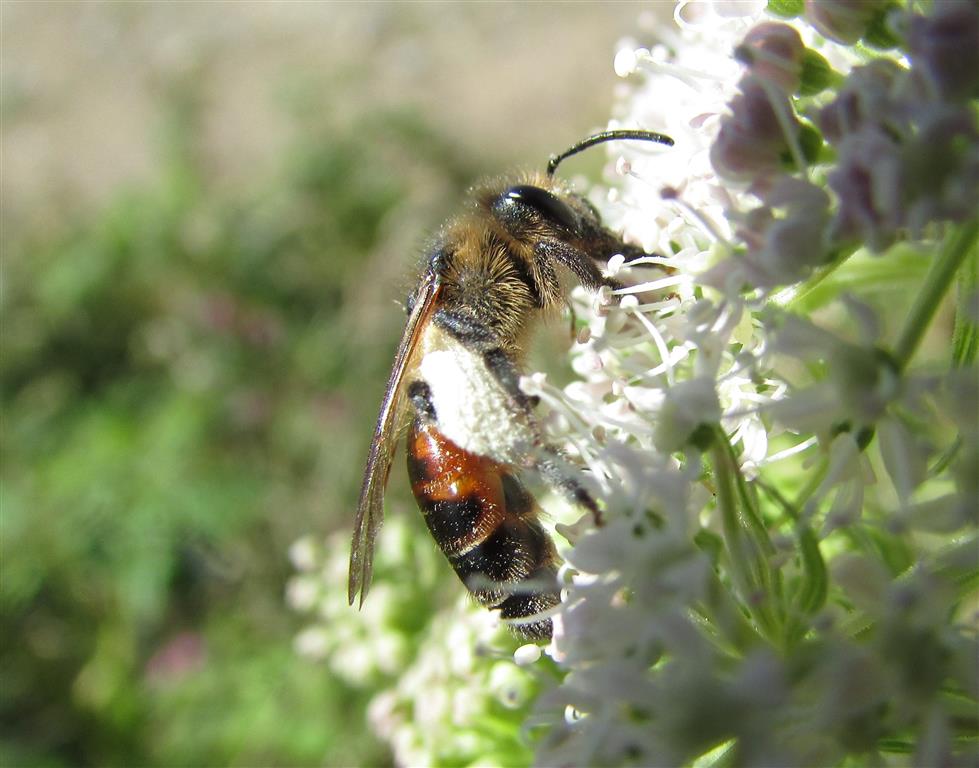
Perkin's Mining Bee (Andrena rosae)
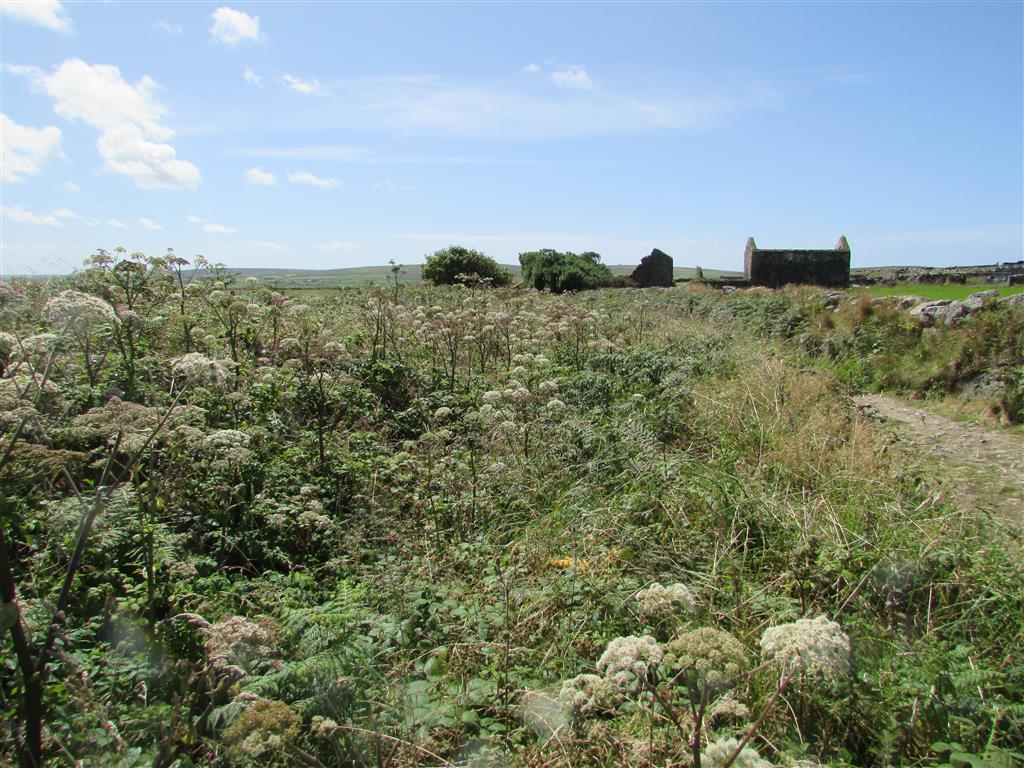
Angelica rich habitat on West Penwith Moors
Conserve areas of ruderal habitats with Angelica. Angelica is a binannual. Scrub cut these areas between October to March. Rake or disturb an area in September and directly sow freshly collected angelica seed from sites as local as possible in disturbed area.
Protect areas of flowering scrub and taller ruderal habitats. These areas need occasional cutting regimes rather than complete abandonment.
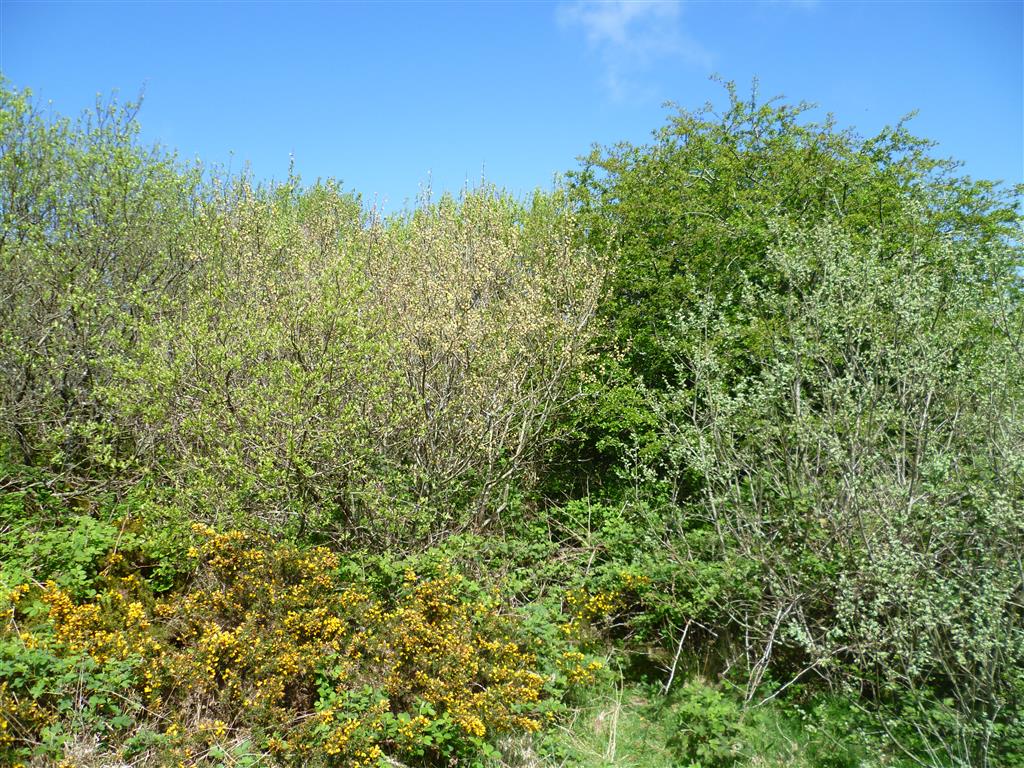
Scrub edge habitat with Eared Willow and Blackthorn important in spring
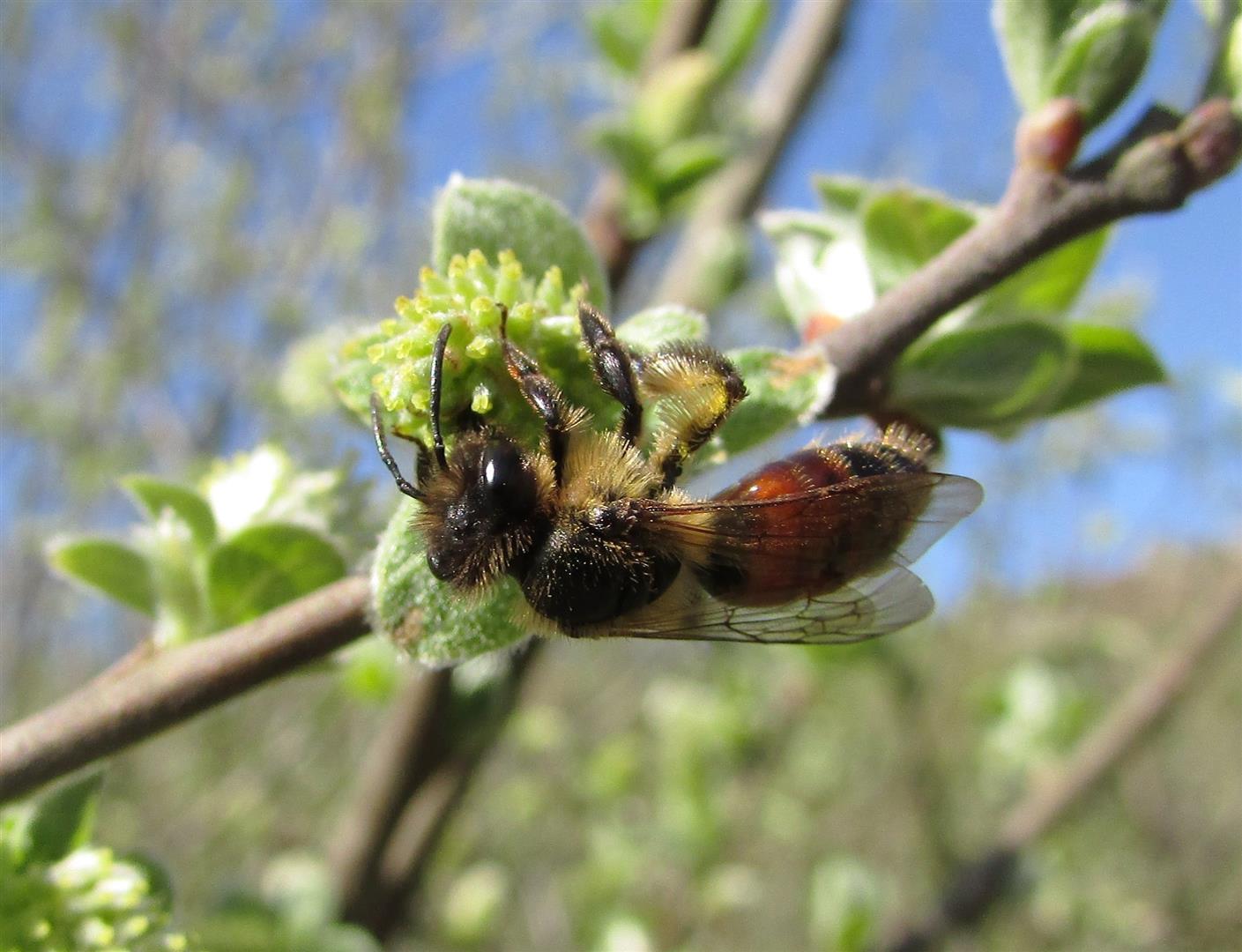
Spring brood Andrena rosae. the bee varies in the amount of red marking
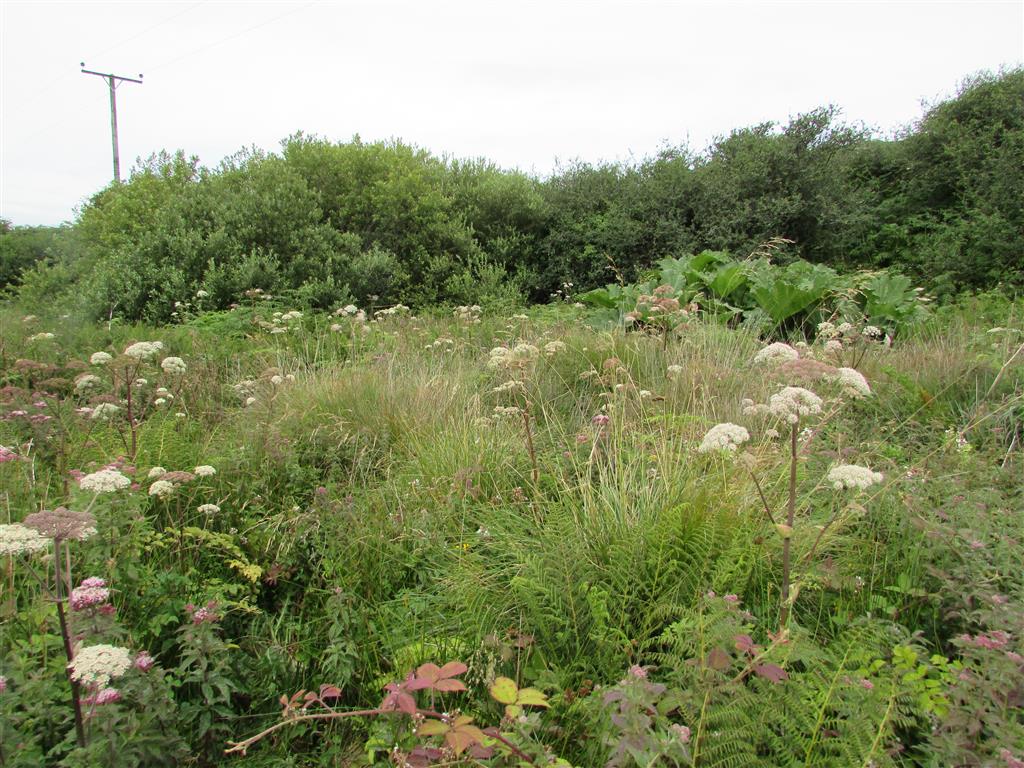
Wetland edge habitat near Zennor providing both Blackthorn and willow in spring and Angelica in summer
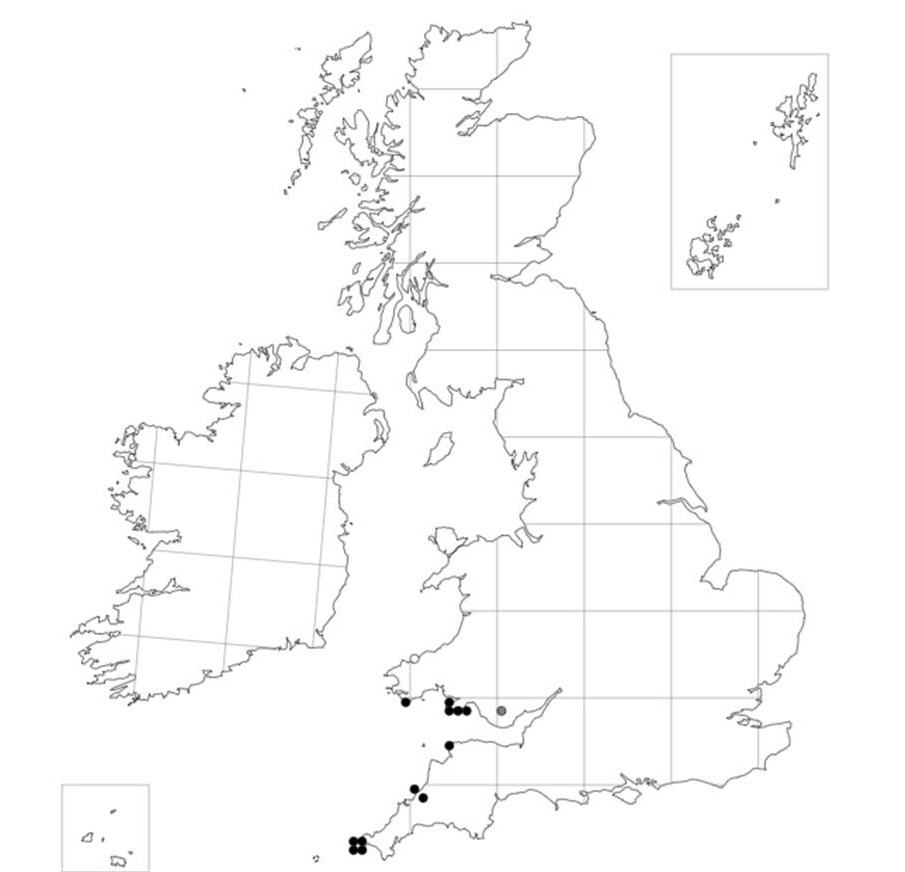
BWARS map of Perkin's Mining Bee (Andrena rosae). This bee is nationally very rare